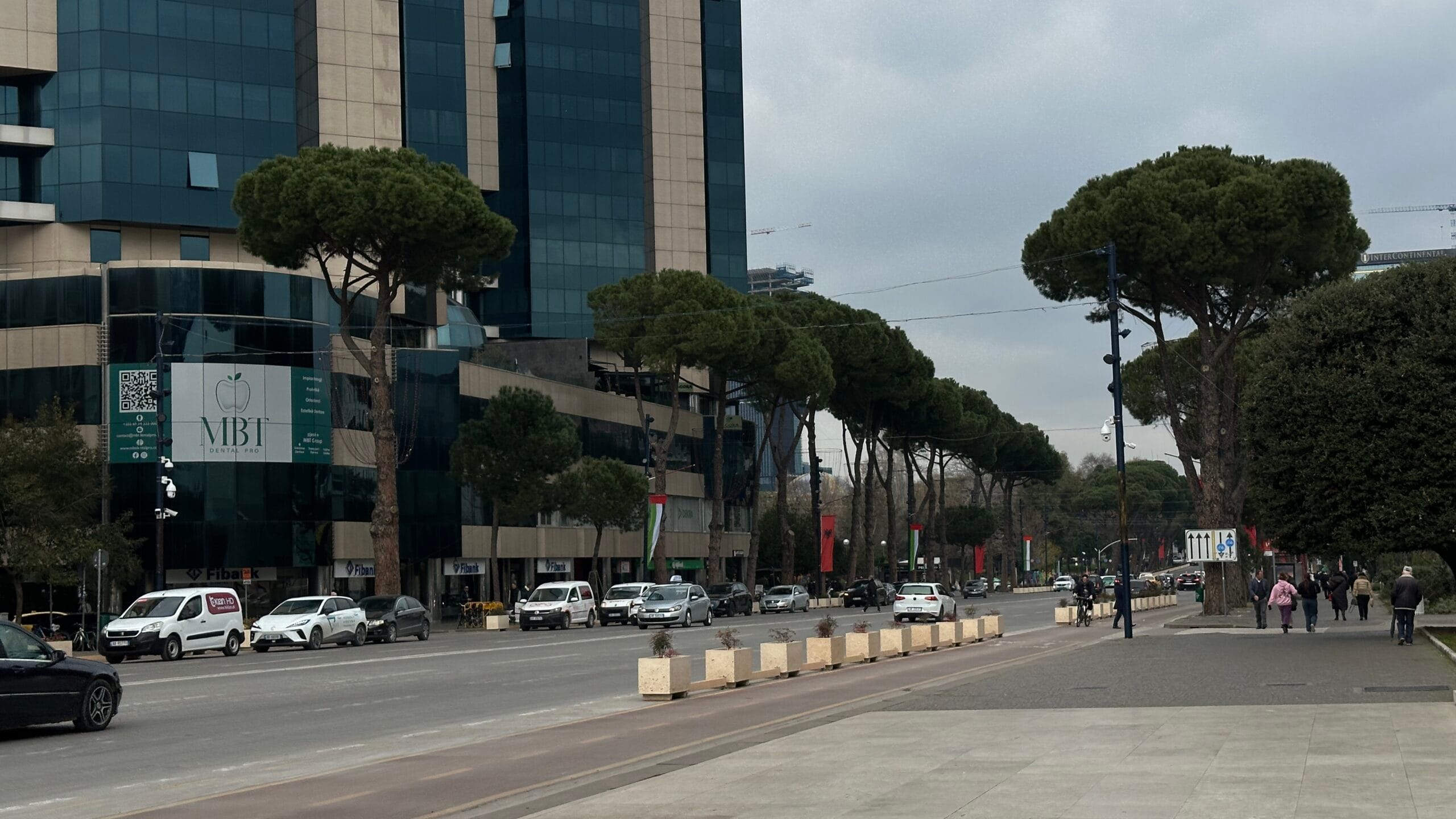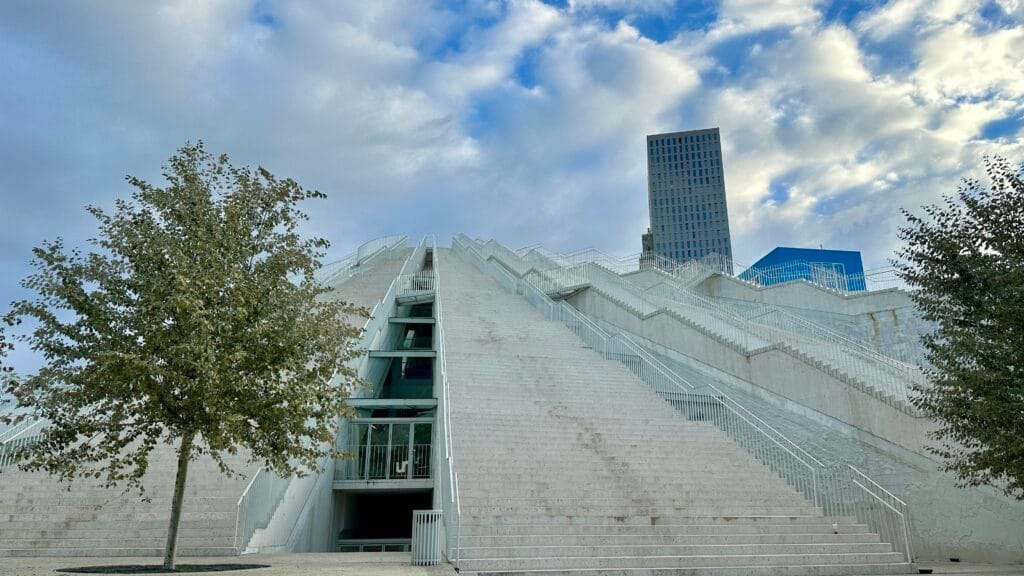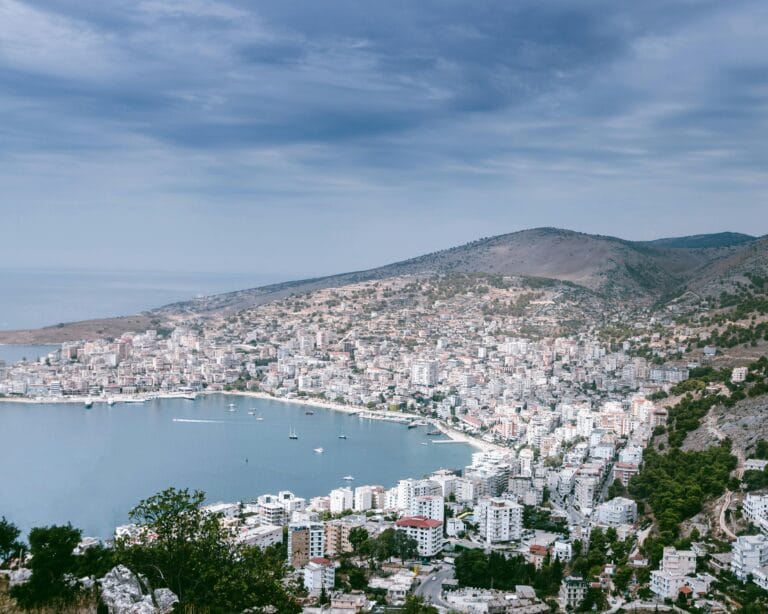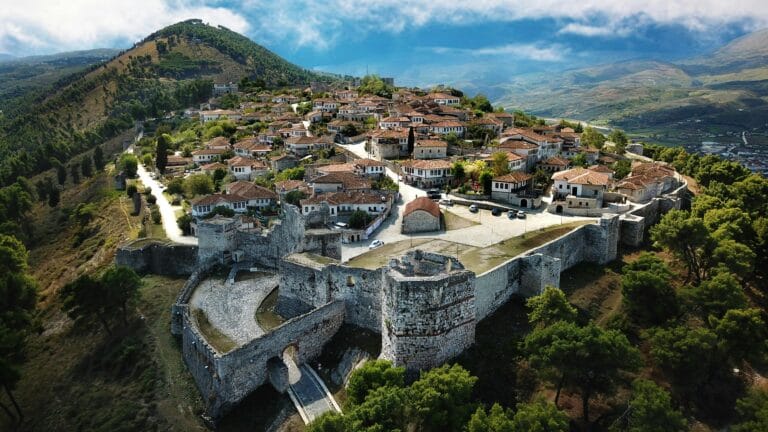
Blloku Tirana: A Step-by-Step Guide to the Vibrant District
Your First 10 Rides Discounted 🚕
Use "WEB" as your referral code, for a free 50 Toko bonus.
Nestled in the southwestern part of Tirana, Albania’s capital, Blloku stands as a remarkable testament to the country’s dramatic transformation over the past three decades. This once-forbidden district has evolved from an exclusive enclave for communist elites to becoming the pulsating heart of Tirana’s social, cultural, and commercial life. Today, Blloku embodies Albania’s journey from isolation to openness, from dictatorship to democracy, and from scarcity to prosperity. Its streets tell a compelling story of reinvention while preserving echoes of a tumultuous past.
The Forbidden Zone: Blloku’s Communist Legacy
During Albania’s communist era (1944-1991), Blloku—whose name literally means “the Block”—existed as a mysterious and heavily restricted zone that ordinary citizens could not enter. Known formally as Ish-Blloku (meaning “Ex-Block”), this area served as the exclusive residential quarter for members of the Albanian politburo and their families. The neighborhood was characterized by elegant villas designed by Italian architects during World War II, which symbolized power and privilege in stark contrast to the living conditions experienced by most Albanians.
The most notorious resident was Albania’s communist dictator Enver Hoxha, whose former residence still stands in Blloku today as a silent witness to the neighborhood’s secretive past. Such was the level of restriction that on most maps during this period, the area remained deliberately unmarked, adding to its mystique and isolation. Armed soldiers guarded the perimeter, ensuring that this fortress of privilege remained impenetrable to ordinary citizens.
Life inside Blloku during the communist period existed in stark contrast to conditions elsewhere in Albania. The ruling elite enjoyed amenities unfathomable to most Albanians, including well-stocked libraries and access to foreign television programs—luxuries unavailable to the general population living under one of Europe’s most isolated and repressive regimes. Even within this privileged enclave, however, fear and paranoia permeated as Hoxha maintained his iron grip, eliminating perceived threats even among his closest associates.
Post-Communist Transformation
The fall of communism in 1991 marked a pivotal turning point for Blloku. As Albania embraced democracy and opened to the outside world, this once-forbidden district underwent a remarkable metamorphosis. The villas that previously housed the ruling elite were repurposed as embassies, cafes, restaurants, and boutiques, each carrying its own unique story. What was once a symbol of division and inequality became increasingly accessible to all Albanians, symbolizing the country’s broader democratic transition.

Since the early 1990s, Blloku has experienced dramatic growth with new developments creating exclusive flats and apartments. This physical transformation reflects Albania’s economic evolution and Tirana’s urbanization. The neighborhood has earned the nickname “playground of the young Albanian elite,” highlighting its contemporary social significance. This transformation represents more than just physical change—it embodies Albania’s shift from a closed society to a dynamic, open, and cosmopolitan urban center.
Contemporary Blloku: The Heartbeat of Tirana
Today, Blloku stands as the undisputed social and cultural nucleus of Tirana, recognized even as the 2022 European Youth Capital’s liveliest district. Its vibrant streets are filled with fashionable locals and curious visitors, creating an energetic atmosphere that permeates the neighborhood. The area is renowned for its energetic nightlife, featuring an abundance of stylish bars, chic cafes, and gourmet restaurants catering to diverse tastes and preferences.
The neighborhood’s transformation extends beyond commercial development. Blloku has become a hub for art and culture, with streets adorned with vibrant street art and numerous galleries showcasing local creative talent. This cultural renaissance reflects Albania’s broader artistic awakening in the post-communist era. The blend of historic charm and modern flair makes Blloku a fascinating place for leisurely exploration, where visitors can experience both Albania’s complicated past and its dynamic present.
Business Landscape and Commercial Evolution
Blloku’s commercial character has evolved dramatically, now hosting a diverse ecosystem of businesses that cater to both locals and tourists. The area is populated with trendy boutiques, upscale shops, fashionable restaurants, and vibrant bars that create a sophisticated urban atmosphere. Notable establishments include Serendipity (a Mexican restaurant), the Library Bar, Raum Bar, Mon Cheri, and Sophie caffe, each contributing to the neighborhood’s distinctive character.
The area’s rooftop bars have gained particular popularity, offering spectacular views of Tirana’s evolving skyline and becoming social hotspots, especially during evening hours. During peak summer months, many of Blloku’s trendy establishments temporarily relocate to the Albanian Riviera, creating an interesting seasonal rhythm to the neighborhood’s business cycle.
Blloku’s commercial significance was further cemented when it became home to Albania’s first international fast-food chain (KFC), marking a symbolic milestone in the country’s integration into global consumer culture. This commercial evolution continues to accelerate, with new businesses regularly opening their doors to serve the area’s growing clientele.
Looking to get around Blloku? Take a Patoko Taxi. See pricing up front, pay with card or cash, and enjoy your stay.
Real Estate Dynamics and Investment Landscape
Blloku has established itself as one of Tirana’s most desirable and expensive real estate markets. As of 2025, property prices in Blloku average around €3,000 per square meter and upwards, with recent price increases of 5% to 27% compared to 2024. This premium reflects both the neighborhood’s historical significance and its contemporary desirability as Tirana’s premier social district.
Property prices throughout Tirana, including Blloku, are expected to continue rising in 2025, driven by high demand and limited supply in central areas. The real estate market has seen significant appreciation, with rental prices in central Tirana experiencing substantial increases—one-bedroom apartments have seen a 61% rent increase while two-bedroom apartments have experienced a 45% increase in recent years.
Current property listings reveal apartments for sale in the Blloku area ranging from €230,000 to €550,000, depending on size, amenities, and specific location within the neighborhood. With its increasing popularity and diverse offerings, Blloku continues to attract both local and international investors looking for promising returns in one of Tirana’s most dynamic districts.
Rental prices in Blloku are particularly interesting, averaging 11.5 EUR per square meter, which even surpasses rates in downtown Tirana, reflecting its growing appeal among young professionals and tourists. The dramatic growth of new developments has resulted in many exclusive flats and apartments, transforming the architectural landscape while maintaining elements of the area’s historical character.
Cultural Heritage and Historical Attractions
Despite its rapid modernization, Blloku maintains important connections to its historical past. The former residence of Enver Hoxha stands as perhaps the most significant historical landmark, offering visitors a tangible link to Albania’s communist period. This preservation of communist-era architecture alongside modern developments creates a fascinating architectural dialogue that reflects Albania’s complex journey.
For visitors seeking deeper insights into Albania’s communist history, the House of Leaves Museum, a former secret service headquarters transformed into a museum, offers chilling insights into the surveillance and persecution that characterized the communist era. These historical sites provide important context for understanding Blloku’s remarkable transformation and Albania’s broader social evolution.
Other attractions include Checkpoint and Heart Tunnel, which have become popular destinations for visitors exploring the area. The neighborhood’s unique blend of historical significance and contemporary vibrancy makes it a compelling destination for those interested in understanding Albania’s complex history and promising future.
Navigating Blloku: Visitor Experience
Blloku is geographically compact and highly walkable, making it ideal for pedestrian exploration. Located approximately 10-15 minutes by foot from Tirana’s city center, the neighborhood is easily accessible for tourists and locals alike. This accessibility has contributed significantly to its popularity as a destination for shopping, dining, and nightlife.
Public transportation options include the Unaza (the Ring) bus service, which circles Tirana and makes stops near Blloku, with the Taivain station serving as a convenient access point. However, visitors should note that parking can be challenging in this popular district, so public transportation or walking is often recommended.
The best way to explore Blloku is on foot, as walking lets you take in the local vibe and discover hidden corners. For a leisurely stroll from Skanderbeg Square, expect a pleasant 10-15 minute walk through some of Tirana’s most iconic streets. The route is straightforward with wide sidewalks, making it perfect for pedestrians to explore the neighborhood’s vibrant atmosphere.
The area comes particularly alive during evening hours when its cafes, restaurants, and bars fill with patrons enjoying Tirana’s vibrant nightlife. Visitors are often advised to experience Blloku both during daylight hours—when its architectural details and street art are most visible—and after dark when the area transforms into Tirana’s premier entertainment district.
Must-Visit Albanian Cuisine Restaurants in Blloku
Blloku district in Tirana offers some of the finest Albanian cuisine experiences in the capital. Here are several outstanding restaurants serving traditional Albanian food that remain thriving as of 2025.
Era Blloku stands as one of the most respected Albanian restaurants in the district. Located on Rruga Ismail Qemali, this restaurant has been serving authentic Albanian cuisine since 1999 and continues to maintain its excellent reputation. Era Blloku specializes in traditional Albanian dishes prepared with the finest ingredients. Their menu features outstanding traditional recipes, fresh salads, tasty desserts, and a selection of pleasant wines.
Restorant Tradita Jonë Blloku offers another authentic Albanian dining experience in the heart of the district. This restaurant focuses on traditional Albanian recipes with a commitment to preserving culinary heritage. Their menu features a wide range of traditional dishes along with an impressive selection of local beers, including Korça, Elbar, and other Albanian favorites.
Salt Tirana has established itself as one of Blloku’s premier dining destinations. The restaurant offers a contemporary take on Albanian cuisine with a focus on high-quality ingredients and elegant presentation. The restaurant’s atmosphere combines vibrant energy with an upscale dining experience, making it popular with both the local professional crowd and visitors.
Padam Restaurant offers a refined dining experience with a modern interpretation of Albanian cuisine in Blloku. It’s recommended for those seeking a more upscale dining experience that honors Albanian culinary traditions while adding contemporary elements. The restaurant is particularly noted for its lamb shank and tiramisu, which come highly recommended by reviewers and local guides.
When dining in Blloku, consider making reservations, especially at popular restaurants like Era Blloku, particularly on weekends when locals and tourists flock to the area. Don’t miss trying traditional Albanian dishes like Tavë Kosi (baked yogurt and lamb), fërgesë (peppers with cheese), and authentic baklava for dessert – these items represent the best of Albanian culinary tradition and are served with pride throughout the district.
Blloku’s Symbolic Significance in Modern Albania
Beyond its commercial and real estate significance, Blloku carries profound symbolic importance in contemporary Albanian society. Its transformation from a restricted zone of privilege to an open, vibrant district accessible to all citizens mirrors Albania’s broader journey from isolation to integration, from repression to expression, and from division to unity.
This neighborhood stands as a powerful symbol of reclamation—how Albanians have repurposed spaces once reserved for the elite into shared areas for public enjoyment and expression. The juxtaposition of communist-era buildings with modern developments creates a physical reminder of how far Albania has come while acknowledging the complexities of its historical journey.
In recent years, the Blloku Cube, a sleek multi-functional complex, has become a symbol of this evolution, offering retail spaces, offices, and a rooftop restaurant. This development highlights the area’s ongoing transformation while respecting its historical significance.
Conclusion
Blloku’s remarkable evolution from a forbidden enclave to Tirana’s most dynamic district encapsulates Albania’s post-communist transformation in microcosm. Its streets, buildings, and businesses tell a compelling story of reinvention and resilience. As Albania continues its path of development and integration with Europe, Blloku remains both a reminder of the country’s complicated past and a symbol of its vibrant, forward-looking present.
For visitors to Tirana, Blloku offers a unique opportunity to witness history, culture, gastronomy, and contemporary Albanian life converging in a single, walkable neighborhood. Its ongoing evolution reflects the broader changes reshaping Albania—balancing preservation and progress, remembering history while embracing the future, and maintaining cultural identity while welcoming global influences. In Blloku’s transformation, we can read the story of modern Albania itself.
Looking to get around Blloku? Take a Patoko Taxi. See pricing up front, pay with card or cash, and enjoy your stay.



